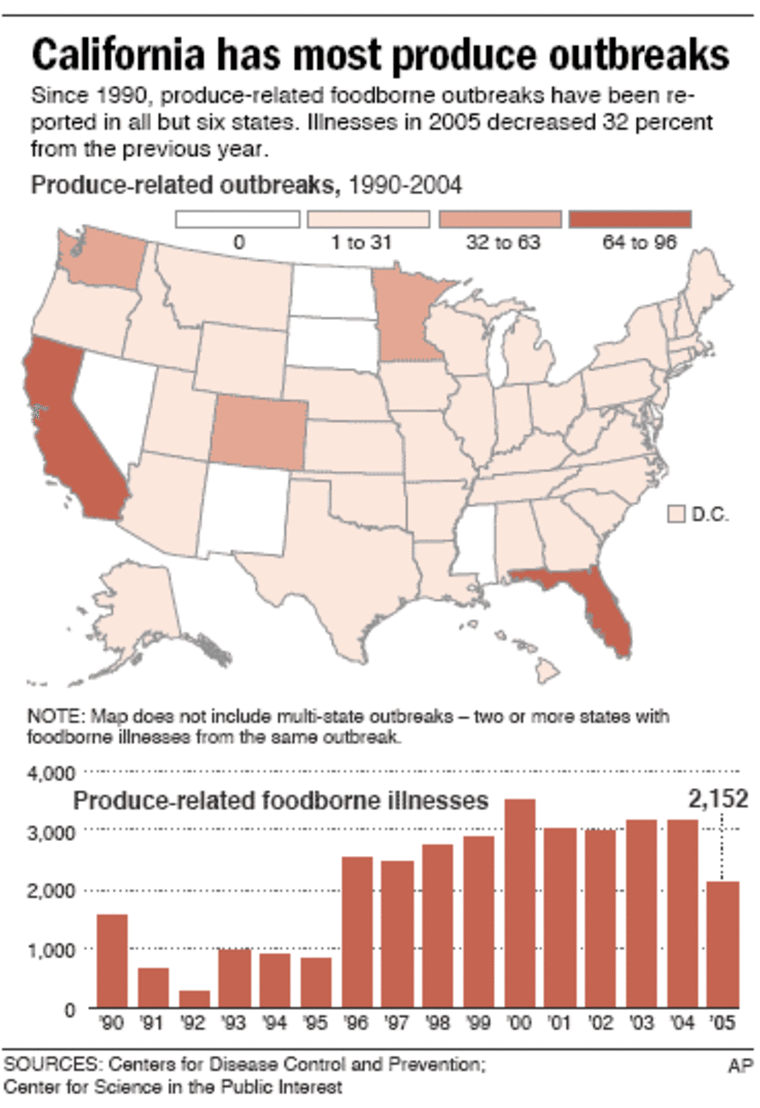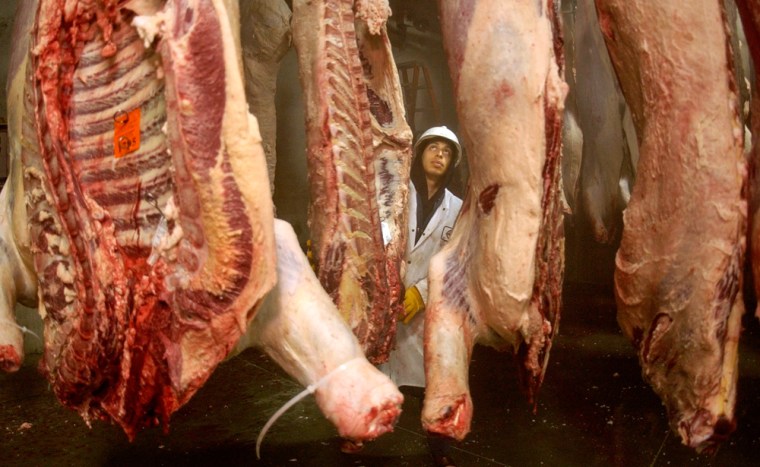It has been a really bad year for the meat industry. A record 29 million pounds of contaminated ground beef has been recalled so far this year.
The culprit is E.coli O157:H7, the same nasty bacteria that caused the widely publicized Jack in the Box outbreak in 1993 and the nationwide spinach recall last year.
No one has exact numbers, but this bad meat has sickened dozens of people across the country, and in some cases, changed their lives forever.
Cynthia Cintura, a mother in Hemet, Calif., made spaghetti with meat sauce for dinner back in May. Two days later, her daughter Lauren — only 4 years old at the time — became extremely ill.
“It was the worst experience of my life.” Cintura says. “Every day I was just basically praying, hoping that she would get through this.”
Lauren spent three weeks at San Diego Children’s Hospital. It took eight dialysis treatments and five blood transfusions to save her life. Doctors say she could develop kidney or liver problems as she grows older.
“Our food is supposed to be safe,” Lauren’s mother says. “Well, it’s definitely not safe enough.”
“We don’t know why we’re seeing this blip,” says Dr. David Goldman of the USDA’s Food Safety and Inspection Service.
In fact, the uptick comes as a surprise to everyone. Until this summer, great progress had been made in reducing E.coli contamination in ground beef.
Dr. Goldman says a variety of possible causes need to be considered. “Is there more of it (E.coli O157:H7) in the cattle? Is there more of it in the environment? Are there changes in the practices in the processing plants? Is this pathogen becoming more virulent?”
The meat industry suggests two other possibilities — consumers who are not properly cooking ground meat, and more aggressive investigations by public health authorities.
“A lot of times recalls in and of themselves indicate the system is working,” says James Hodges, president of the American Meat Institute Foundation.
Hodges tells me the industry is “extremely concerned” about the current situation and “aggressively trying to understand what is happening.”
Seattle attorney Bill Marler, who represents more E.coli victims than any other lawyer in the country, blames both the government and industry. He calls some of USDA’s policies “silly” and he says the meat industry has gotten “a little bit lazy.” A few weeks ago, he called for congressional hearings into the situation.
USDA hasn’t announced it yet, but Dr. Goldman tells me the agency plans to meet with consumer groups, industry representatives, and scientists to figure out how to address the E.coli problem.
USDA inspectors, who are in meat plants every day, have just been told to verify within the next 30 days that proper food safety procedures are being used.
USDA also plans to expand its testing program to check the raw components of ground beef for bacterial contamination. Hamburger meat is made from a number of ingredients, such as muscle meat and the trimmings that are cut off steaks and roasts.
The most significant change in agency policy lowers the threshold for action when bad meat is discovered.
Until now, USDA had what attorney Marler calls “a stupid policy.” It would not ask for a recall (it doesn’t have the authority to order one) if E. coli or some other harmful bacteria was found in an opened package in someone’s refrigerator or freezer. The assumption was that the consumer had somehow contaminated the meat.
Now, unless USDA has specific evidence that strongly suggests the bacterial contamination took place in the home, it will assume the product was already contaminated when purchased. And it will use those samples to build a case for a recall.
This change is a direct result of the agency’s missteps in handling last month’s huge Topps Meat Co. recall. Eleven days before the recall, tests confirmed that a box of frozen hamburger patties had E. coli. But because that contamination was found in an open box of burgers in a family’s freezer, nothing was done.
You might think any meat left over after a day’s production run would have to be discarded. Not so. Meat processors are allowed to keep this meat overnight and mix it with the next day’s batch. The industry term for this leftover meat is rework.
“That can lead to problems,” says Michael Hansen, a food scientist at Consumers Union. Using leftover production the next day “is a convenient way to contaminate the product over and over again,” he says. And it makes it difficult to figure out where the contamination starts and stops.
The USDA’s Goldman says rework is a practice “we’ve discouraged, but we have not prohibited.” He tells me USDA is reviewing its policy on rework, even though most companies, he says, don’t use it.
In fact, this mixing of meat from one day to the next was standard procedure at the Topps Meat Co. It could be why the company’s recent recall of frozen ground beef products — 21.7 million pounds — was so large.
This may come as a surprise, but USDA does not have the authority to order a recall of contaminated meat. The agency can only ask a company to voluntarily recall it.
“I just find this to be absurd,” says attorney Marler. “To me, if there’s a problem, we should expect our government to intervene on our behalf.”
Consumer advocates agree. They want Congress to give the Department of Agriculture the power to order meat recalls. The meat industry opposes this idea, saying it wouldn’t change anything.
“There has not been one instance where the product has not been voluntarily recalled at the request of the government,” says James Hodges of the American Meat Institute Foundation.
Critics argue that if USDA had the power to force recalls, things would move more quickly. They point to last week’s voluntary recall of ConAgra frozen pot pies. That recall came four days after USDA linked a salmonella outbreak — that made at least 165 people sick — to those products.
The bottom line
“Most of the best practices for controlling E.coli are not required by the U.S. government,” notes Caroline Smith DeWaal, Director of Food Safety at the Center for Science in the Public Interest. She thinks they should be. I agree.
It’s time for Congress to get off the dime and give USDA the resources and authority it needs to insure the safety of the country’s meat and poultry supply. Lawmakers must require the agency to improve its testing and enforce better production practices.
And Congress, while you’re at it, you need to do the same for the FDA, which regulates the rest of our food supply.
In the meantime, anyone using ground beef needs to assume that meat is contaminated and handle it accordingly. That means cooking it thoroughly and preventing cross-contamination. You, dear consumer, are the last line of defense.
More information:

